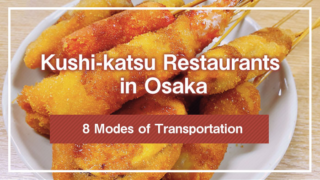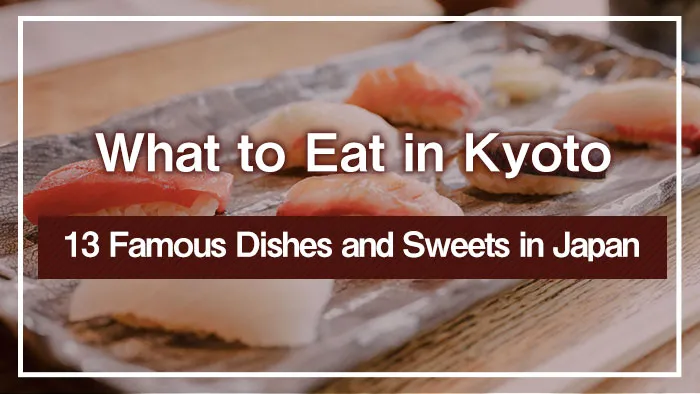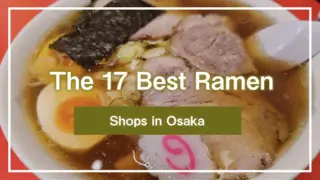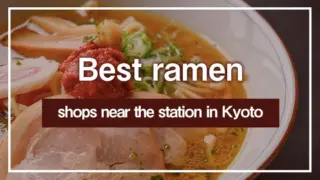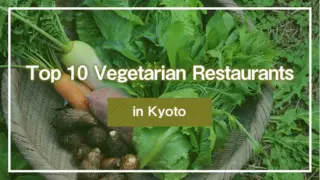Kyoto is a city where you can fully enjoy the charm of Japanese cuisine, ranging from traditional Japanese dishes to local foods and beautiful sweets. The profound flavors of Kaiseki and Shojin Ryori, representative of Kyoto cuisine, and local specialties like Saba Sushi are highly recommended. Kyoto is also home to numerous renowned ramen shops, known for their rich chicken-based soy sauce broth and back fat.
This article introduces the must-try foods in Kyoto, perfect for visitors from overseas looking to explore the culinary scene.
1.What to Eat in Kyoto
Kyoto is is a city steeped in history and is representative of Japan Japan, known for its rich food culture developed over a long history. For instance, Kyoto cuisine is considered the pinnacle of Japanese cuisine, characterized by delicate flavors that utilize seasonal ingredients. While preserving the traditions of Kaiseki cuisine, it has evolved to suit modern tastes.
Kyoto vegetables, nurtured by the local climate, are rich in flavor and aroma, offering unique tastes. Dishes made with fresh local vegetables, such as Shojin Ryori, are recommended for health-conscious individuals. Moreover, Kyoto is the home of Japanese tea. Uji tea, deeply connected to Kyoto, is known for its aromatic and rich flavor. The culture of the tea ceremony also developed and flourished in Kyoto.
2.Ten Must-Try Meals in Kyoto
Kyoto’s cuisine is characterized by its elegant and delicate flavors, passed down through a long tradition. The historic cityscape complements the enjoyment of the artisans’ flavors. Here are ten delicious foods to try in Kyoto.
2-1.Soba/Nishin Soba
Soba, a popular Japanese noodle dish, is typically made from buckwheat flour. It can be enjoyed in a variety of ways, such as Zaru Soba (cold noodles with dipping sauce) or Kake Soba (hot noodles in broth).Nishin Soba is a dish topped with sweet and savory simmered herring and is a winter specialty in Kyoto.
Famous soba and Nishin Soba restaurants in Kyoto include “Honke Nishin Soba Matsuba” and “Soba-dokoro Masutomi.”
2-2.Obanzai
Obanzai refers to traditional Kyoto home-style dishes made using seasonal vegetables and local seafood. These healthy, comforting dishes embody the traditional food culture of Kyoto.
Renowned Obanzai restaurants in Kyoto include “Goryori Menami,” “Aoi,” and “Taro-ya.”
2-3.Kaiseki/Kaiseki Cuisine
Kaiseki cuisine emphasizes the formalities and spirituality rooted in the tea ceremony, embodying the spirit of “Wabi-Sabi.” The basic menu includes “one soup, three dishes,” which beautifully showcases the natural flavors of the ingredients with restrained embellishments. Kaiseki cuisine, served at banquets and celebrations, is luxurious with numerous dishes and a visually appealing presentation, including sashimi and grilled items.
Famous Kaiseki restaurants in Kyoto include “Mizai,” “Miyamasou,” and “Hassun.”
2-4.Shojin Ryori
Shojin Ryori is a traditional Japanese cuisine based on Buddhist teachings. It excludes meat and fish, focusing on plant-based ingredients such as vegetables, legumes, grains, and seaweed. It is characterized by the balanced incorporation of five flavors (sweet, sour, bitter, salty, spicy), five colors (red, yellow, green, white, black), and five cooking methods (boiling, grilling, steaming, frying, raw). Accentuating the natural flavor of the ingredients, shojin ryori delivers a simple, yet exquisite flavor.
In Kyoto, famous Shojin Ryori establishments include “Hakuun-an” and “Hanbeyfu Honten.”
2-5.Tsukemono (Pickles)
Tsukemono are traditional Japanese preserved foods, where vegetables are pickled in salt, vinegar, koji, miso, etc. Tsukemono include various types such as vinegar-pickled, salt-pickled, and fermented ones, allowing the enjoyment of the umami and nutrients of vegetables over a long period. Typical examples are umeboshi (pickled plums), takuan (pickled daikon radish), hakusai-zuke (pickled napa cabbage), and shibazuke (pickled cucumber and eggplant). Tsukemono are known for their unique flavors and textures, with regional varieties and seasonings.
In Kyoto, renowned Tsukemono shops include “Shibakyu,” “Senmaizuke Honten Otazu,” and “Oshukudokoro Kyoto Narita.”
2-6.Yudofu and Yuba
Yudofu is a traditional Japanese dish where tofu is warmed in broth, such as kombu dashi, and enjoyed with a variety of condiments and dipping sauces. It enhances the delicate flavor of tofu and is especially popular during the cold winter season.
Yuba is made by skimming the thin film that forms on the surface when soy milk is heated. Yuba can be eaten as sashimi, in simmered dishes, or deep-fried, offering a smooth and elastic texture with a rich soy milk flavor.
In Kyoto, famous Yudofu and Yuba restaurants include “Nanzenji Junsei,” “Sohonke Yudofu Okutan Kiyomizuten,” and “Yudofu Sagano.”
2-7.Saba Sushi
Saba Sushi is a type of pressed sushi made with mackerel. Fresh mackerel is marinated in vinegar and then pressed onto rice. In Kyoto, it is often eaten on special occasions such as festivals and celebrations, loved for the exquisite harmony between the fatty mackerel and the vinegared rice.
Famous Saba Sushi establishments in Kyoto include “Chidoritei,” “Izuzushi,” and “Masugatayaya.”
2-8.Chazuke
Chazuke is a traditional Japanese light meal consisting of pouring hot tea or broth over rice. Popular for its ease of preparation, it is a simple yet delicious dish. Common toppings include umeboshi (pickled plums), salted salmon, nori (seaweed), pickles, and sea bream. In Kyoto, “Matcha Chazuke,” made with matcha, is also well-known.
In Kyoto, famous Chazuke places include “Akoya Chaya” and “Bubuzuke.”
2-9.Unagi (Eel)
In Kyoto’s long-established restaurants, dishes using eel such as Seiro-mushi and Hitsumabushi are popular. Seiro-mushi is a dish where eel and rice are steamed in a bamboo steamer, giving it a fluffy texture. Hitsumabushi involves finely chopped eel mixed with rice, which is finally eaten in a Chazuke-style, allowing for flavor variation.
In Kyoto, recommended eel restaurants include “Jisaikyo Gion” and “Kyogoku Kaneyo.”
2-10. Ramen
Kyoto ramen is known for its rich chicken broth, soy sauce soup and back fat, offering a thick and hearty flavor. Toppings often include local ingredients such as Kujo green onions and char siu (braised pork belly), making it beloved by locals and tourists alike.
Famous Kyoto ramen shops include “Honke Daiichi Asahi Takabashi Honten,” “Ginjo Ramen Kubota,” and “Menya Santa.”
3.Three Sweets to Try in Kyoto
Kyoto offers a variety of enticing sweets that blend tradition and modernity. From seasonal Japanese sweets like Mitarashi dango, Yokan, and Mizumanju, to matcha-based treats that are popular year-round, there is something for everyone. Here are three must-try sweets in Kyoto.
3-1. Matcha Sweets
In Kyoto, sweets made with Uji matcha are famous for their rich flavor. Matcha parfaits, matcha ice cream, and matcha roll cakes are popular, known for their deep taste and vibrant green color. Many popular shops often have long lines.
Famous matcha sweets shops in Kyoto include “Eirakuya Honten,” “Sabou Isehan,” and “Micasadeco & Cafe Kyoto.”
3-2. Warabi Mochi
Warabi mochi is a traditional Japanese sweet known for its chewy texture made from bracken starch. The translucent, soft mochi has a smooth mouthfeel and is typically enjoyed with kinako (roasted soybean flour) or kuromitsu (black sugar syrup).
Some prominent Warabi mochi shops in Kyoto include “Isegenroku Tachibanaya Honten,” “Fumon Chaya,” and “Kinako to Torori Gion Honten.”
3-3. Yatsuhashi
Yatsuhashi is a quintessential traditional Kyoto sweet with a history dating back to the Edo period.There are two types of Yatsuhashi: baked and raw. Baked Yatsuhashi is a cinnamon-flavored, crispy cracker, while raw Yatsuhashi is a chewy mochi-like sweet often filled with sweet red bean paste. Available flavors include koshi-an (smooth red bean paste), matcha, and seasonal varieties. Yatsuhashi is a popular Kyoto souvenir.
Famous Yatsuhashi shops include “Honke Nishio Yatsuhashi,” “Shogoin Yatsuhashi Sohonten,” and “Izutsu Yatsuhashi Honpo.”
Conclusion
Kyoto’s culinary appeal lies in its diverse flavors that blend tradition and modernity. From the traditional Kaiseki cuisine to Shojin Ryori, Yudofu, Saba Sushi, and Nishin Soba, there’s something for everyone.. When it comes to sweets, matcha-based treats, Warabi mochi, and Yatsuhashi are not to be missed. In the summer, shaved ice is also a popular choice.
When visiting Kyoto from abroad, it’s a good idea to create a “must-try list” of foods and then narrow down the selection of restaurants, so that you can fully enjoy the spectrum of Kyoto’s culinary delights.
*This article is based on information available as of May 2024.
Kyoto Nishiki Market Guide | Hours and Top 5 Recommended Foods



